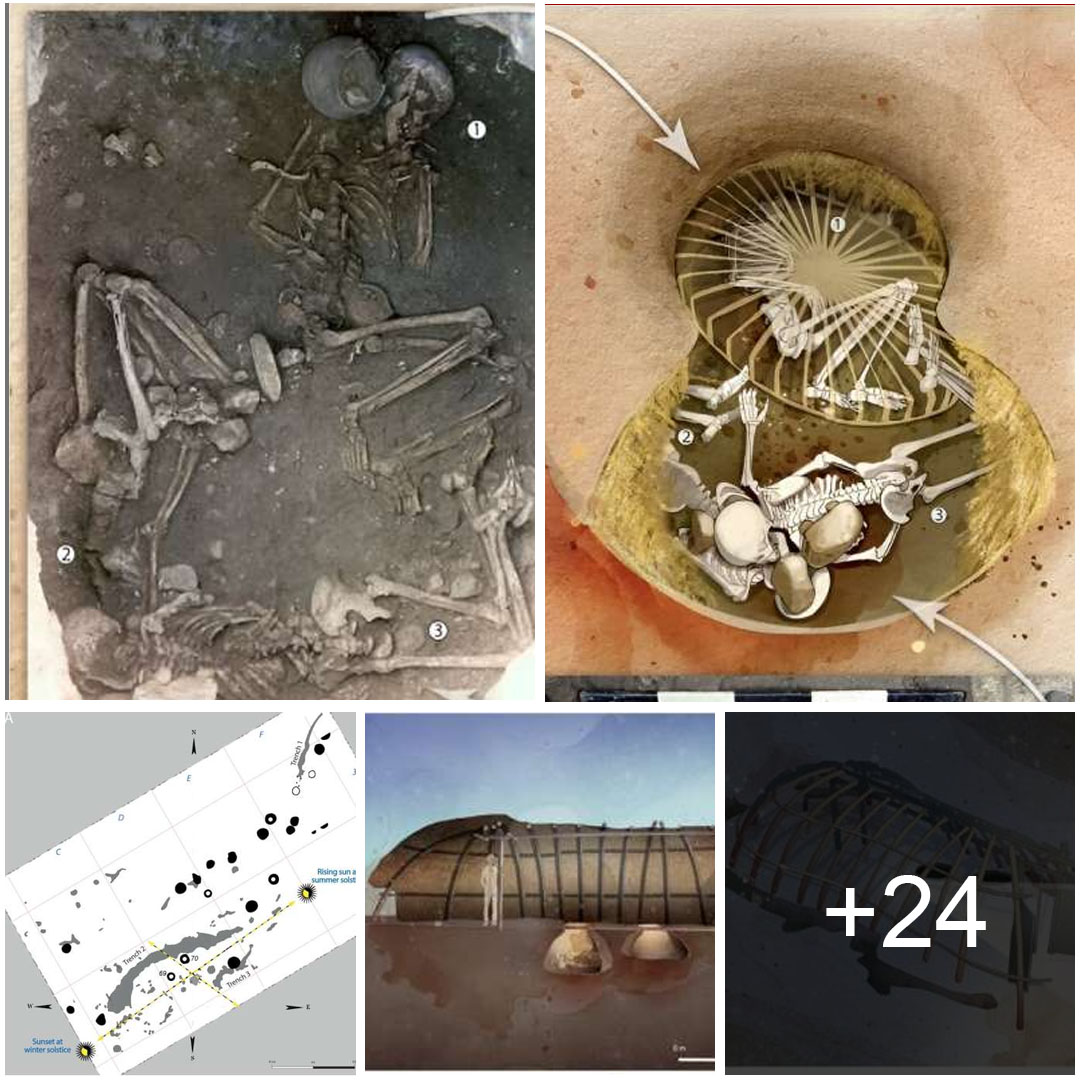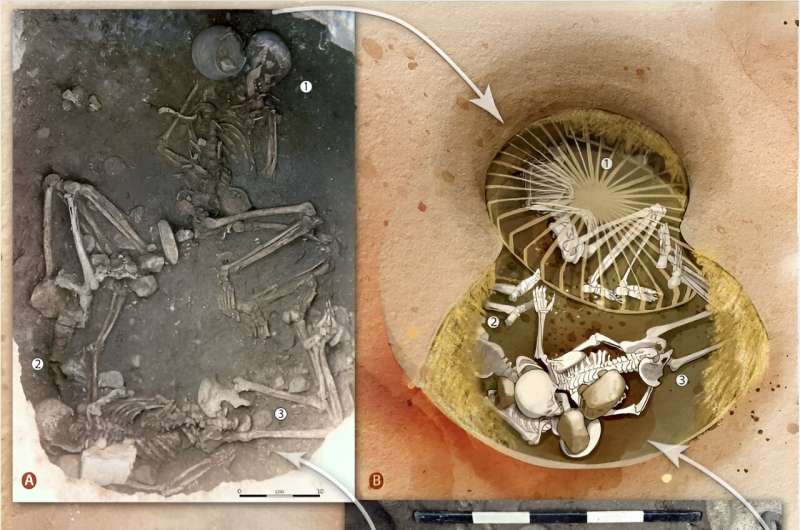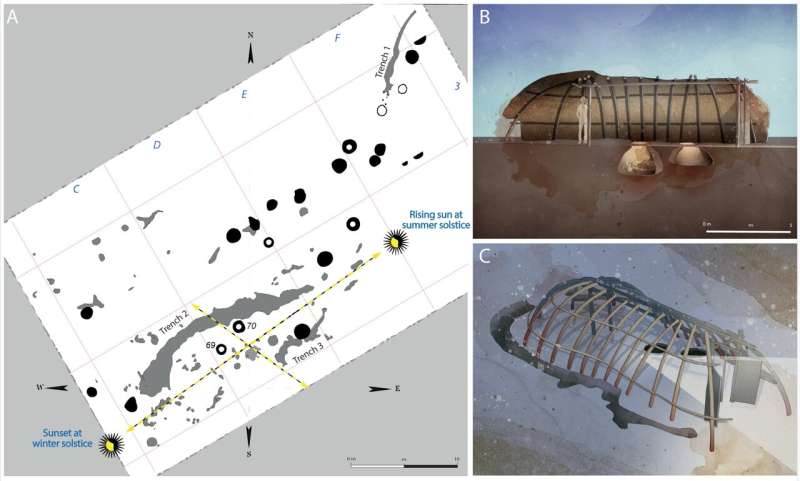

A team of archaeologists affiliated with several institutions in France and one in Germany has found that ritualized human sacrifice was common across Europe during the Neolithic.
As they report in the journal Science Advances, the group studied the remains of three women found in a tomb in France who appeared to have been ritually brutalized sometime between 4000 and 3500 BCE and compared the remains with others like them found at sites in Europe.
The work began with the study of the remains of three women found in a tomb in Saint-Paul-Trois-Châteaux—two of the bodies showed the women were buried in unusual positions, one on her back with her legs bent upward, the other in a prone position with her neck on the torso of the other woman—characteristics associated with incaprettamento, a murder technique used by organized criminals as a means of intimidation in modern times.
The third woman was lying on her side. One of the women also had a piece of a grindstone set on her skull and another appeared to have been buried alive. The positioning, the researchers suggest, indicates that the victims were likely killed where they lay. They also note that in addition to the odd positioning of the bodies relative to one another, they were also all oriented toward the solstice.

The researchers suggest the positioning likely meant that the women had all been killed using a form of ritualized asphyxiation—ligature strangulation—where the weight of a victim’s own body results in strangulation.
To add more credence to their theory, they searched the literature for other instances of similar finds in other parts of Europe. They found 20 cases, from sites in Spain, Catalonia and Eastern Europe. Some of the earliest examples dated to between 5400 and 4800 BCE., an indication that forced forms of positional asphyxiation were conducted as part of ritualistic sacrifices all across Europe for thousands of years. They note also that rock carvings found in a cave in Italy depicted the form of human sacrifice they observed in the cave in France.
More information: Bertrand Ludes et al, A ritual murder shaped the Early and Middle Neolithic across Central and Southern Europe, Science Advances (2024). DOI: 10.1126/sciadv.adl3374
Journal information: Science Advances
© 2024 Science X Network





